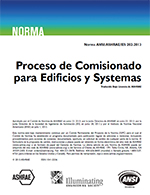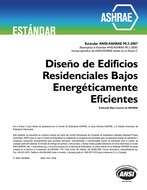Description
Residential construction walls are typically composed of several layers of materials, including the exterior cladding, waterresistive barriers (e.g., building paper/housewrap), sheathing, studs with insulation and gypsum wall-board. The water-resistive barrier layer is designed to provide resistance to air and water entering the wall system, while being vapor permeable and allowing the wall to dry to the exterior. The appropriate level of water-resistive barrier vapor permeability in hot-humid climates, however, has been an item of contention in the construction industry. Vapor permeability maximizes wall drying, but in hot-humid climates must be balanced to minimize any potential moisture accumulation due to inward vapor drive; this may be caused by rain absorbed into cladding and subsequently driven inward as the cladding is heated by solar radiation. The objective of this project was to evaluate the performance of typical residential wall systems that incorporate water-resistive barriers with a range of vapor permeability. These systems included both absorbent and nonabsorbent claddings in hot-humid climates for direct comparison.
This paper describes the test design, the test facility construction and installation, and the resulting data. The testing included both environmental exposure and point-source water leakage. The approach chosen was to use a real-time natural exposure test hut located in Tampa, FL. This test facility had wall specimens inserted in the long sides of the hut, 16 wall specimens per side. Duplicate wall specimens were used on each side for exposure related comparisons. There was an on-site weather station to monitor local weather conditions necessary for experimental analysis. The interior conditions were controlled by point-terminated HVAC. Wall specimens were instrumented with a variety of temperature, humidity, and wood moisture content sensors for remote monitoring. In addition to natural weather exposure, the wall specimens were periodically wetted to simulate rain leakage by a water injection system. The test station was installed in Tampa, FL (climate zone 2) in June 2006. Data were collected from June 2006 until November 2007. The experimental results show that, when no interior vapor barrier was present, all walls performed well, with no significant moisture accumulation.
The only occurrence of persistent high moisture content was when an interior vapor barrier was present in conjunction with a major, unplanned water leak. Future work includes modification of the water injection design and protocol to provide higher water challenges to a broader diversity of wall assemblies.
Citation: Thermal Performance, International Conference, 2010
Product Details
- Published:
- 2010
- Number of Pages:
- 18
- File Size:
- 1 file , 7.5 MB
- Product Code(s):
- D-BUILDINGSXI-159




